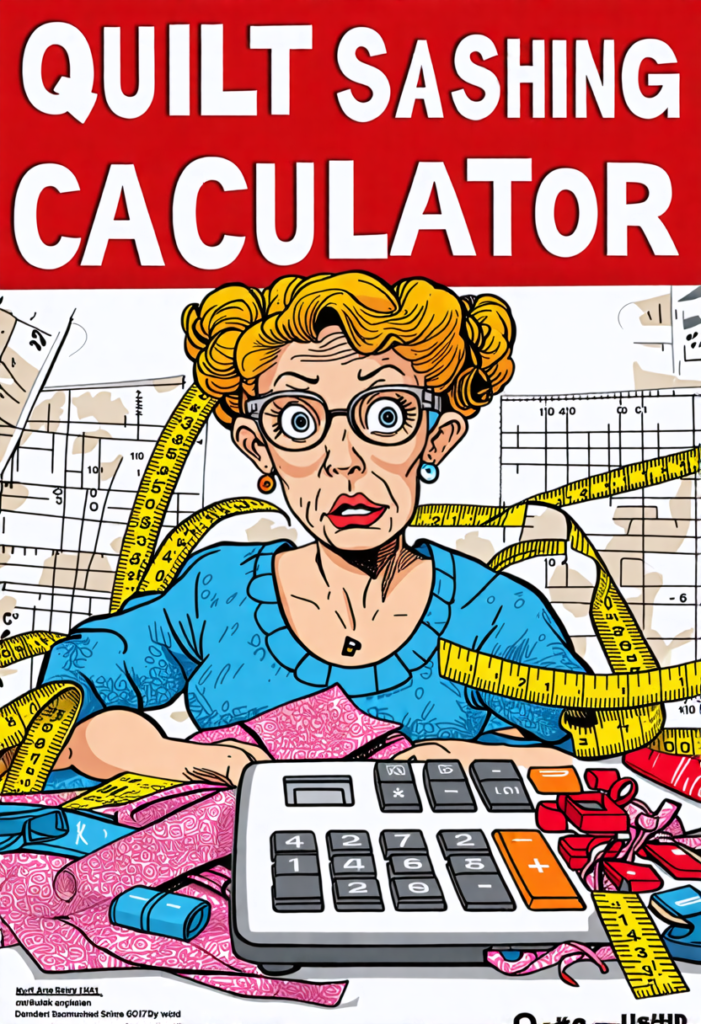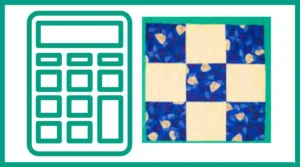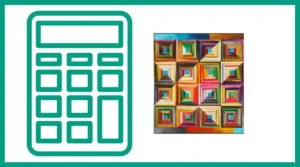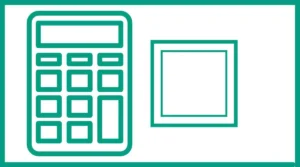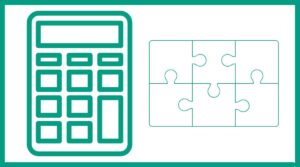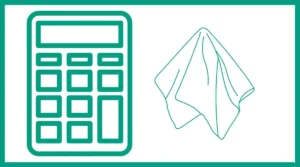Quilt Sashing Calculator
The Quilt Sashing Calculator is an invaluable tool for quilters of all skill levels. This web-based application helps you accurately calculate the dimensions and fabric requirements for sashing and cornerstones in your quilt projects.
Sashing, the strips of fabric that separate quilt blocks, and cornerstones, the small squares at the intersections of sashing strips, can dramatically enhance the overall appearance of a quilt. This calculator takes the guesswork out of planning these crucial elements, ensuring your quilt turns out exactly as envisioned.
Understanding the Calculator’s Input Fields
The calculator requires several inputs to provide accurate results. Let’s break down each field and its purpose:
1. Finished Width of Each Block (inches)
This is the width of your quilt blocks after they’ve been sewn into the quilt. It’s important to use the finished size, not the cut size, for accurate calculations.
2. Finished Height of Each Block (inches)
Similar to the width, this is the height of your quilt blocks in their final, sewn state.
3. Number of Blocks Across the Quilt (columns)
Enter the number of blocks you plan to have in each row of your quilt.
4. Number of Blocks Down the Quilt (rows)
This is the number of blocks you’ll have in each column of your quilt.
5. Finished Sashing Strip Width (inches)
Enter the desired width of your sashing strips as they’ll appear in the finished quilt.
6. Width of Fabric (inches) for Sashing and Cornerstones
This is typically the usable width of your fabric after removing selvages. Standard quilting cotton is often 42-44 inches wide.
7. Do You Want Cornerstones?
Check this box if you plan to include cornerstones where sashing strips intersect.
8. Do You Want a Sashing Border?
This option adds sashing around the entire quilt as a border.
9. Do You Want Cornerstones in the Sashing Border?
If you’ve selected a sashing border, this option adds cornerstones to the border’s corners.
How the Calculator Works
When you click the “Calculate” button, the tool processes your inputs and performs several calculations:
- It determines the total dimensions of your quilt by multiplying the number of blocks by their sizes and adding the sashing widths.
- It calculates the number of sashing strips needed for both vertical and horizontal placement.
- If cornerstones are selected, it computes the number required.
- The calculator then determines the yardage needed for both sashing and cornerstones based on the fabric width you’ve specified.
Interpreting the Results
The calculator provides a comprehensive breakdown of your quilt’s specifications:
Quilt Information
This section gives you the overall dimensions of your finished quilt and the total number of blocks used. This information is crucial for planning your quilt top layout and determining backing and batting requirements.
Sashing Fabric
Here, you’ll find the number of sashing strips you need to cut and their dimensions. The calculator adds a 1/2 inch to the width for seam allowances. It also provides the total yardage of fabric required for sashing, which is invaluable when purchasing materials.
Cornerstone Fabric
If you’ve opted for cornerstones, this section details the total number needed, cutting instructions, and the yardage required. Like the sashing, it includes a 1/2 inch seam allowance in the measurements.
Practical Examples
Let’s explore two examples to illustrate how the Quilt Sashing Calculator can be used in real-world quilting projects:
Example 1: Lap Quilt with Sashing
Suppose you’re making a lap quilt with the following specifications:
- Block size: 8″ x 8″
- Quilt layout: 5 blocks across, 6 blocks down
- Sashing width: 2″
- Fabric width: 42″
- Including cornerstones
Enter these details into the calculator:
- Finished width of each block: 8
- Finished height of each block: 8
- Number of blocks across: 5
- Number of blocks down: 6
- Finished sashing strip width: 2
- Width of fabric: 42
- Check the box for cornerstones
After clicking “Calculate,” you’ll receive the following information:
- Quilt dimensions: 52″ x 62″
- Total blocks: 30
- Sashing fabric needed: 1.76 yards
- Number of cornerstones: 42
- Cornerstone fabric needed: 0.16 yards
This information allows you to confidently purchase materials and plan your cutting strategy.
Example 2: Queen-Size Quilt without Cornerstones
Now, let’s consider a larger project:
- Block size: 12″ x 12″
- Quilt layout: 7 blocks across, 8 blocks down
- Sashing width: 3″
- Fabric width: 44″
- No cornerstones
Enter these details:
- Finished width of each block: 12
- Finished height of each block: 12
- Number of blocks across: 7
- Number of blocks down: 8
- Finished sashing strip width: 3
- Width of fabric: 44
- Leave the cornerstone box unchecked
The calculator will provide:
- Quilt dimensions: 105″ x 120″
- Total blocks: 56
- Sashing fabric needed: 4.07 yards
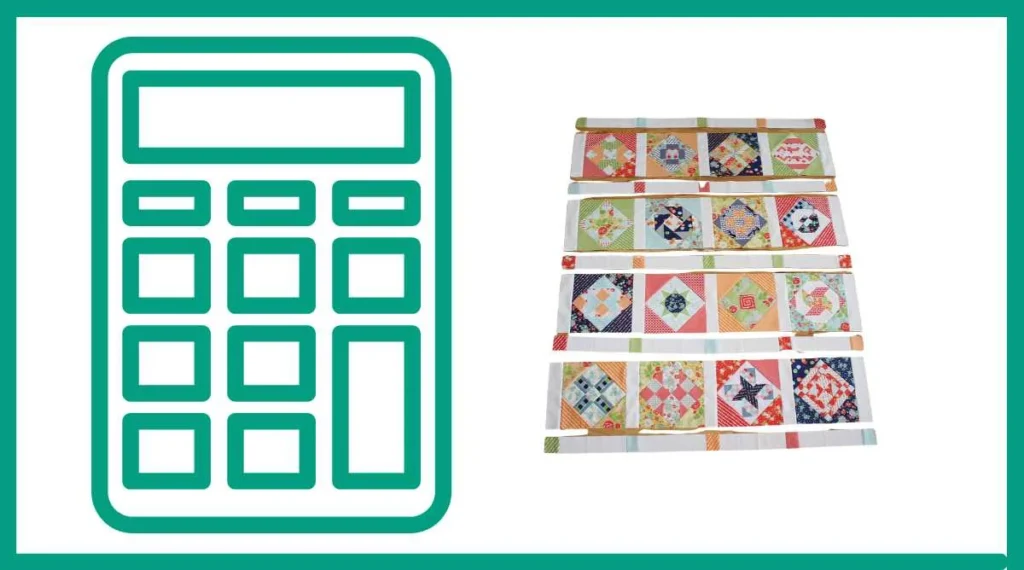
Benefits
- Accuracy: The calculator eliminates manual calculation errors, ensuring your fabric purchases and cutting are precise.
- Time-Saving: It quickly provides results that would take considerable time to calculate by hand, especially for complex quilt designs.
- Material Efficiency: By giving exact yardage requirements, it helps prevent over-purchasing fabric, saving you money.
- Design Flexibility: You can easily experiment with different sashing widths and quilt layouts to see how they affect the final dimensions and fabric requirements.
- Confidence in Planning: Knowing exact measurements and fabric needs allows you to plan your quilt project with certainty.
Tips
- Double-Check Inputs: Ensure all measurements are entered correctly to avoid inaccurate results.
- Consider Seam Allowances: The calculator adds 1/2 inch to sashing and cornerstone measurements for seam allowances. Keep this in mind when cutting your fabric.
- Fabric Width Variations: Be aware that fabric widths can vary. Always measure your specific fabric and use that measurement in the calculator for the most accurate results.
- Rounding Up: When purchasing fabric, it’s often wise to round up to the nearest quarter or half yard to account for potential cutting errors or fabric shrinkage.
- Save Your Calculations: Consider taking a screenshot or writing down the results for future reference during your quilting process.
